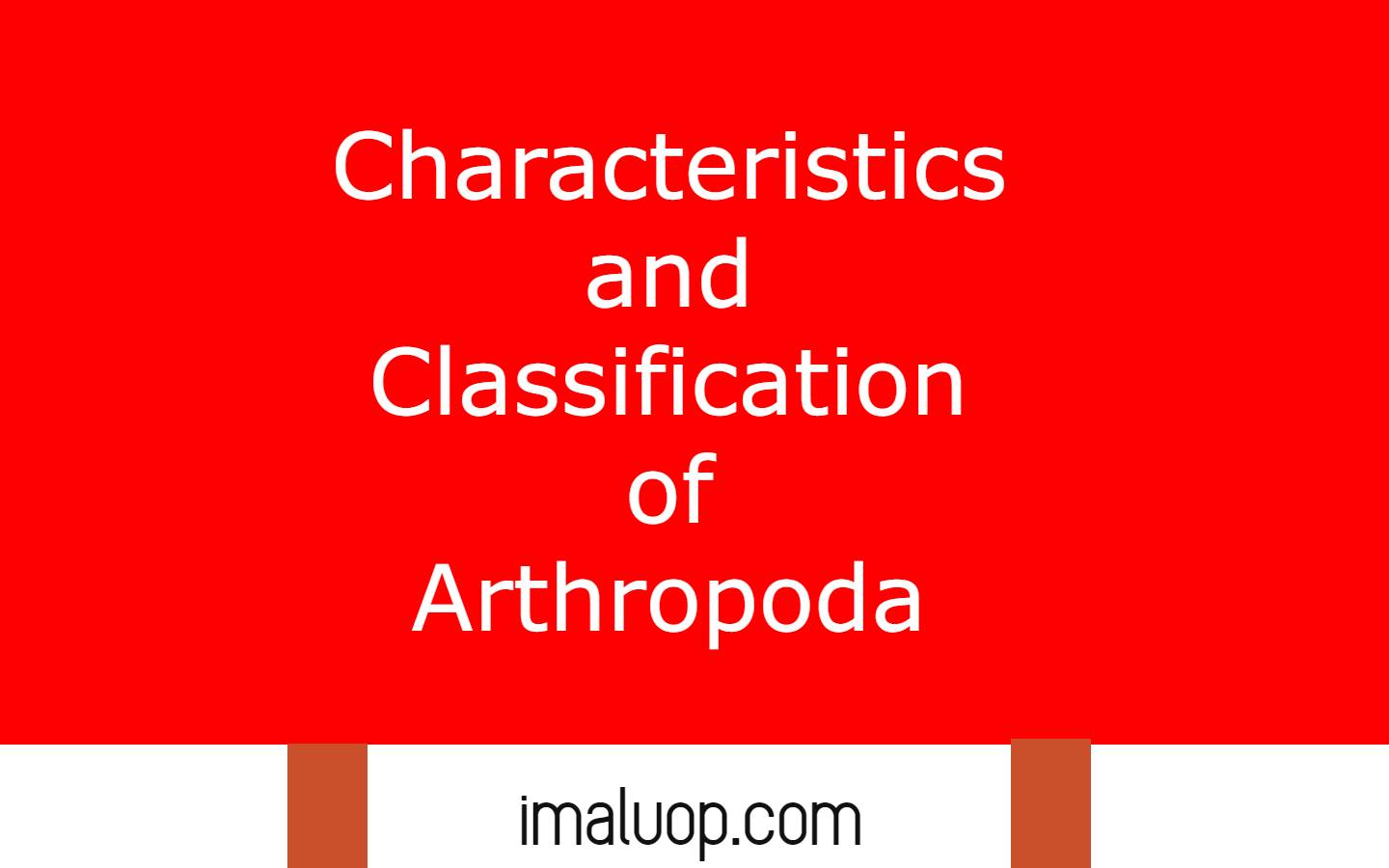Hi, today we are going to discuss characteristics and classification of arthropoda depending upon their characteristics which will give you an general overview about the phylum arthropoda.
Arthropoda are present all over the world and they can be terrestrial, aquatic while some are parasitic because of their great power of adaptation. Phylum arthropods have a very large number of species around nine lakh species which cause a great biological diversity.
Table of Contents
Characteristics of Arthropoda:
- They show bilateral symmetry due to special arrangements of organs in their body and are triploblastic for the presence of three germ layers and they show jointed appendages which makes their name as arthropoda.
- Body is divided into three different parts: head, thorax and abdomen; different organs are organised to form organ systems in arthropods.
- They have an open circulatory system so circulatory fluids are open in the body cavity and their jointed appendages help them to locomotion.
- Chitinous exoskeleton has a protective structure in them and they have compound eyes which is useful to form mosaic vision which is peculiar to this phylum.
- Excretory material is generally uric acid and the excretory organ for terrestrial arthropods is Malpighian tubules while aquatic arthropods generally have green glands or coxal glands for eliminating excretory material.
- Their respiration occurs through the fine tubules present throughout their body which form the tracheal system and general body surface also take part in gaseous exchange.
- They have a well developed digestive system and most important sensory structures present in arthropods are simple or compound eyes, antenna, statocysts.
Classification of Arthropoda:
Now we will show how scientists classify members of Arthropoda and how they are arranged into different classes.
Crustacea:
- Crustacea may be aquatic, terrestrial or parasitic and they respire through gill or general body surface.
- Head and thorax region are fused in crustacea which form cephalothorax and their body is covered by a large single hard structure called carapace.
- They have two pairs of antennas as sensory organs and have five pairs of appendages for their locomotion and they excrete through antennal glands or green glands.
- Their development is indirect because of the presence of their larval stage and some examples of this class are Daphnia, Palaemon.
Myriapoda:
- They are terrestrial arthropods and their body shows numerous segmentation and their eyes are simple, head bear antennae.
- They have large numbers of legs and their respiration occurs through trachea and their excretory organ is Malpighian tubules, Scolopendra is an example of this phylum.
Hexapoda:
- They are terrestrial arthropods in which the body is divided into three parts head, thorax and abdomen, thorax have three segments while abdomen are divided into 7 to 11 segments.
- Heads have one pair of compound eyes, one pair of pre segmental acorns and they have three pairs of appendages for locomotion.
- Development is indirect so their lifecycle has several larval stages and they respire through gills and trachea while they perform excretion through Malpighian tubules, mosquito and ants are general examples of this class.
Chelicerata:
- They are terrestrial arthropods in which the head and thorax region fuse to form cephalothorax but one most important feature is they do not have any antenna.
- Their excretory organ is Malpighian tubules and respiration occurs through both gill and trachea.
- Their abdominal region is segmented into 13 parts and they have four pairs of interior appendages.
Onychophora:
They are terrestrial arthropods with small sized segmented bodies and they respire through trachea but excretion does not occur through Malpighian tubules instead they excrete through nephridia, example of this arthropod class is paripetus.

Trilobitomorpha:
- They are primitive arthropods present in Paleozoic era in large numbers but now they are extinct and their body is divided into one median lobe and two lateral lobes.
- One special feature is they have biramous appendages and they have one pair of antennae and a pair of compound eyes.
Read More: Characteristics and Types of Archaebacteria
Hi Everyone!!! Welcome to Imaluop. Imaluop always try to learn some new and he want to share to other people. Here we will try to learn various topics on Science, specially on Biological Sciences.
